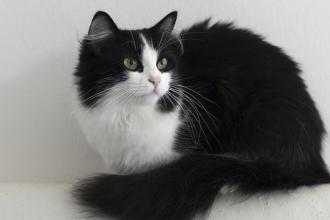My sweet wife, Bess, is languishing in her deep dementia. As it is, I say thanks each day of the year to our caregivers, friends, doctors, pharmacists, food and drugstore store clerks, gardeners, plumbers, post persons, people running the Internet, clothing store people, the master of therapy dog Pixie, and many others—even bankers—all of whom are vital to her home care. So I thought that this year on Thanksgiving Day I will pay special homage to the materials and physical equipment that aid us in her care.
There are two extreme medical conditions afflicting people who require extraordinary efforts to care for at home: ALS and dementia of whatever etiology. In the case of ALS the mind is usually clear but the body is not responding—in dementia the body is functioning but the mind is not. Dementia adds up to amnesia, agnosia, aphasia, and apraxia. In practical terms my Bess has no memory of recent or past events, she does not recognize us specifically (although she seems to know that we belong to her), she is not coherent in her speech (although, surprisingly she is able yell defensive comments like “oh, shut up!“ or “get away from me”); she does not comprehend a conversation although she responds to requests like “let us go to the bathroom.” She walks with assistance, using her shuffling steps but she is unable to dress herself or care for herself in bathroom situations. At the same time, and almost like a special prize for us, she is able to flash lovely smiles from time to time, she caresses our arms, responds to hugs and kisses, and delights us when she hugs her favorite plush teddy bear or when she eats her finger food dinner with obvious enjoyment.
But back to materials and equipment. Our house has large rooms and wide doors but it has a second floor. We needed a wheelchair, a motorized stair chair to upstairs, a ramp to the garden, elevated toilet seats, innumerable grab bars, and a battery-driven bath chair to lower and lift her in the bathtub. Unfortunately the last item is now unused because she developed an uncontrollable fear of showers or baths. In the bathroom we have an array of pull-ups, pads, flushable wipes, rubber gloves, no-rinse cleansers, waterless shampoo, a host of body lotions, mouth rinses, and special teeth cleaning sponges, barrier creams and other lotions, tea tree oil, and whatever else…
Then we have our electronics. We have small wireless video cameras in all rooms where she might spend time—the caregivers have the pocket sized receivers with them all the time. In the bedroom we have a carpet with a wireless sensor so alarm bells ring if she puts her foot on the floor trying to get out of bed. Resting in the family room, she is usually seated in a large, motorized easy chair. Getting up is made easier as the chair tips her on her feet almost to a standing position. In the laundry room the machines are working overtime. Several of her outfits are the rehab types, with Velcro or other fasteners in the back or the sides, enabling quick dress and undress. I must not forget all the cleaning devices—much used in the bathroom. Talk of bathrooms: the only major alteration in the house was the expansion of a powder room into a full bathroom for my own, private use.
The caregivers have taken over our former master bedroom and bathroom, upstairs and downstairs bathrooms are equipped for our loved one. Caregivers rule the kitchen. We have papayas, avocados, prunes, figs, dates, and a variety of oat meals, cookies, soups, and a dedicated freezer with whatever we can think of. I must not forget all the flowers—and finally, our gas fireplace, which seems to be on even on a hot summer day: Bess loves a hot room, so we also have small heaters in the bathrooms and her bedroom.
So, on this Thanksgiving Day I am going to raise my glass of BC wine to our materials and equipments. This morning I already said Thank you, Thank you, to our caregivers. And a love you, to Bess, my partner for over 64 years.
—George Szasz, CM,MD
This posting has not been peer reviewed by the BCMJ Editorial Board.


